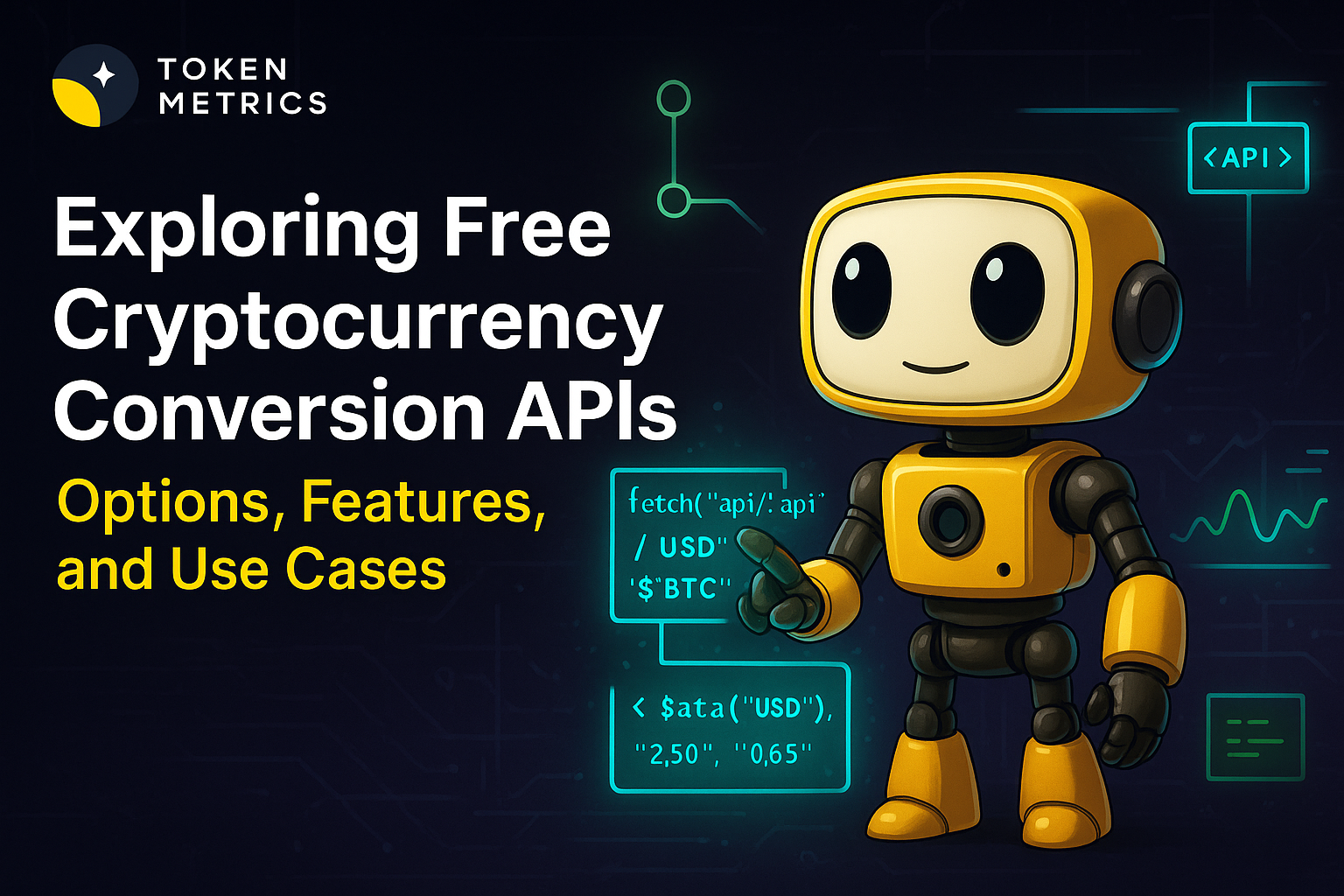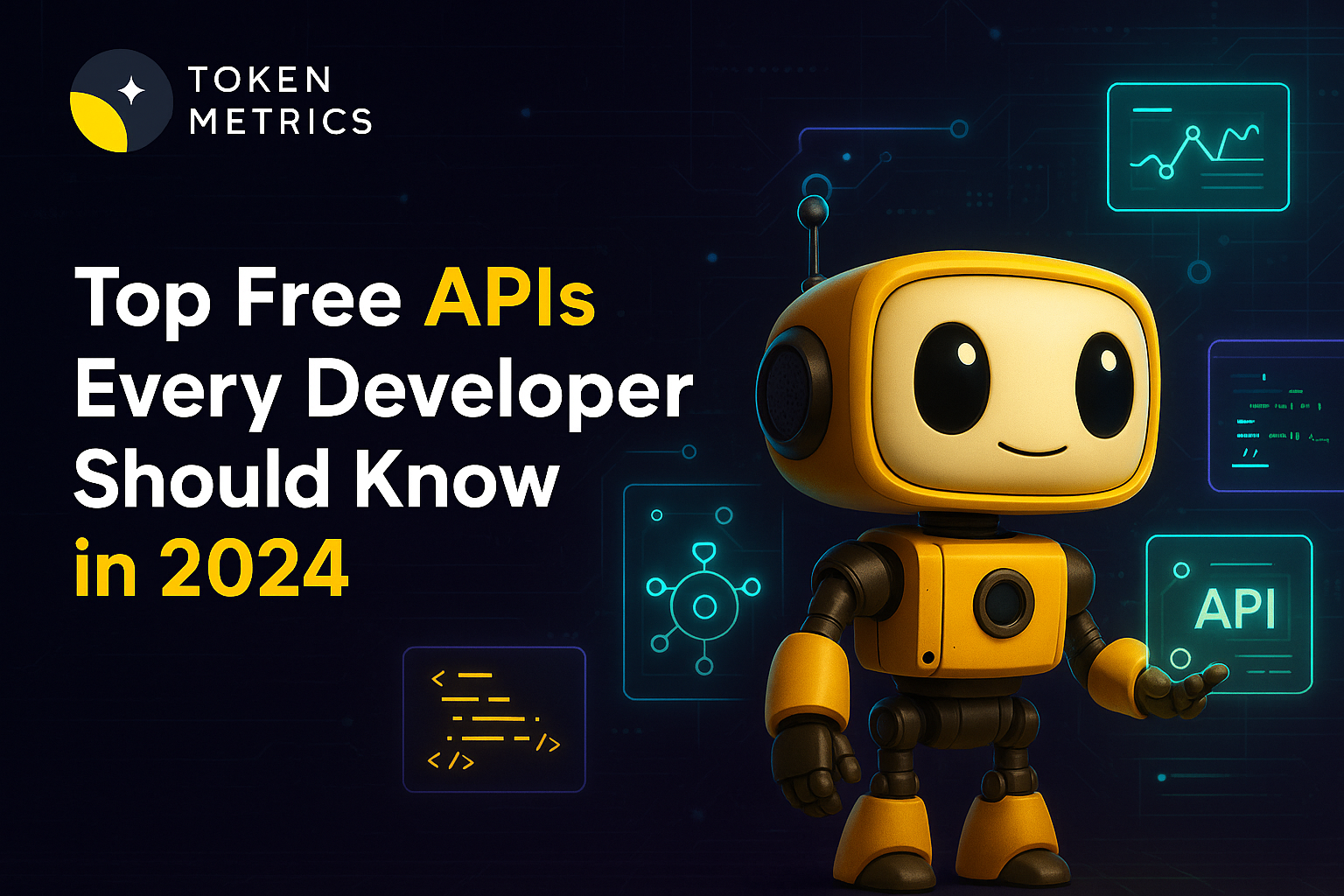AI Crypto Trading - How Token Metrics AI Helps You Catch Every Crypto Narrative Before It Pumps

In crypto, narratives don’t just tell stories — they move serious capital.
Every few weeks, a new sector takes center stage. One day it’s memecoins. The next it’s AI tokens. After that, it's Real World Assets (RWAs), restaking protocols, or something entirely new. The constant cycle of hype and attention creates volatile capital flows that most traders struggle to keep up with. By the time you realize a narrative is pumping, you're often already late. The smart money has rotated, and you’re left holding the bag as exit liquidity.
This is where Token Metrics steps in with a powerful solution: AI-driven Portfolio Rotation based on real-time narrative performance.
Instead of relying on gut feeling or Twitter hype, Token Metrics uses real-time data, AI-powered grading, and predictive analytics to help you rotate your crypto portfolio into the right narratives at exactly the right time. It’s built for traders who want to consistently stay ahead of capital flows, and it’s already live for Premium users.
Let’s dive deeper into why narrative rotation matters, how Token Metrics tracks it in real-time, and why this AI-powered system is changing the way traders approach crypto markets.
Why Narrative Rotation Matters
If you’ve been trading crypto for a while, you already know one core truth: attention drives liquidity. And in crypto, attention shifts fast.
Whenever a new narrative gains traction — whether it's driven by a protocol upgrade, macroeconomic news, or simply viral social media posts — the capital starts flowing:
- Venture capital firms pump their favorite tokens tied to the narrative.
- Influencers and alpha groups amplify the hype.
- Traders chase short-term momentum looking for fast gains.
- Retail investors arrive late and often buy the top.
This cycle repeats over and over. If you’re not rotating early, you end up entering the trade just as early participants are exiting. The trick is not just identifying strong narratives — it’s recognizing when they start to heat up, and moving capital accordingly.
Narrative rotation allows traders to continuously reallocate their portfolio toward the sectors that are attracting fresh liquidity — and more importantly — exiting fading narratives before they reverse.
In traditional markets, this level of active sector rotation often requires hedge fund-level resources. In crypto, with its fragmented data and 24/7 markets, it's even harder to pull off manually. That’s where AI comes in.
How Token Metrics Tracks Narratives in Real Time
The Token Metrics team recognized that crypto traders needed a smarter, data-driven approach to narrative rotation. So they built an entire system that tracks sector performance dynamically — in real time — across hundreds of tokens and multiple narratives.
Here’s how it works:
- Curated Narrative Indices: Token Metrics has built multiple AI-curated indices that group tokens into active narratives such as Top AI Tokens, Top Memecoins, Top RWAs, and more. Each index represents a distinct narrative, aggregating multiple projects into a single performance tracker.
- Live ROI Tracking: Every index is continuously monitored based on 7-Day and 30-Day ROI metrics. This gives traders instant visibility into which narratives are starting to outperform and where capital is rotating.
- Real-Time Bullish/Bearish Signals: The platform applies AI-powered bullish and bearish signals across individual tokens within each index. This helps you gauge not only sector-level momentum but also individual token strength.
- Trader Grade Scoring: Every token within each narrative is also scored using Token Metrics’ proprietary Trader Grade, which ranks tokens by short-term momentum, volatility, liquidity, and AI-driven signal strength.
In short, instead of relying on your gut instinct or waiting for narratives to trend on crypto Twitter, you’re seeing clear, data-backed signals the moment narratives begin to heat up — and well before retail crowds arrive.
What is AI Portfolio Rotation?
The real breakthrough is AI Portfolio Rotation. This isn’t just a dashboard that shows you sector performance. Token Metrics goes a step further by actually generating actionable portfolio rotation recommendations based on live narrative performance.
The system works like this:
- Monitor Narrative Outperformance: The AI monitors all active narrative indices, tracking which sectors are outperforming based on short-term ROI, momentum signals, and Trader Grades.
- Rotate Exposure Automatically: As narratives shift, the system automatically suggests reallocating exposure into the narratives that are gaining momentum.
- Select Top Tokens: Within each narrative, only the top-scoring tokens — those with the strongest Trader Grades and bullish signals — are included in the recommended allocation.
- Exit Underperformers: If a narrative weakens, or signals turn bearish, the system exits positions and reallocates capital into stronger sectors.
It’s essentially an AI-powered quant fund operating on narrative rotation logic — continuously adapting your portfolio allocation based on capital flows across narratives in real-time.
For traders, it turns the chaotic, unpredictable world of crypto narratives into a structured, rules-based trading system.
Example From the Webinar: AI → Memes → RWA
During the recent Token Metrics Premium webinar, the team showcased how AI Portfolio Rotation played out in the real market over just a few weeks.
- AI Tokens Surge: After new OpenAI product announcements, AI-related crypto tokens like FET, RNDR, and AGIX began to outperform, attracting attention from traders anticipating a broader AI sector pump.
- Memecoin Mania: Shortly after, celebrity-driven memecoin launches flooded the market, pushing memecoins like PEPE, FLOKI, and DOGE into the spotlight. The narrative shifted hard, and capital rotated into these high-volatility assets.
- Real World Assets (RWA) Take Over: As macroeconomic narratives around tokenized assets and on-chain treasuries gained momentum, the RWA sector surged. Tokens tied to tokenization narratives, like ONDO or POLYX, saw significant inflows.
By using Token Metrics’ AI-powered system, traders following the dashboard were able to rotate their portfolios in sync with these capital flows — entering hot narratives early and exiting before momentum faded.
Who Is This For?
AI Portfolio Rotation isn’t just for advanced quant traders — it's designed for a wide range of crypto participants:
- Swing Traders: Rotate across hot sectors with clear, data-driven insights.
- Fund Managers: Systematically allocate capital across outperforming narratives while minimizing guesswork.
- Crypto Builders & Analysts: Monitor sector flows to understand broader market trends and build better macro narratives.
- On-Chain Traders: Actively manage DeFi portfolios and liquidity positions with narrative-aware positioning.
The point is simple: narrative allocation beats token picking.
Most traders spend hours debating which token to buy, but often fail to recognize that sector rotation drives much larger price moves than token fundamentals alone — especially in the short-term crypto cycle.
Token Metrics vs. Guesswork
To really understand the edge this provides, let’s compare:
Feature Token Metrics AI Rotation Manual Research
Live Narrative ROI Tracking ✅ Yes ❌ No
AI-Driven Rotation Logic ✅ Yes ❌ No
Trader Grade Filtering per Theme ✅ Yes ❌ No
Bullish/Bearish Signals ✅ Yes ❌ No
Performance vs BTC/SOL/ETH Benchmarks ✅ Yes ❌ Time-consuming
While manual research often leaves you reacting late, Token Metrics transforms narrative rotation into an objective, data-powered process that removes emotional bias from your trading decisions.
The Bottom Line
AI-driven portfolio rotation gives you the ultimate edge in fast-moving crypto markets.
Instead of constantly chasing headlines, Discord alphas, or social media hype, Token Metrics allows you to:
- Instantly see which narratives are gaining momentum.
- Automatically rotate into top-rated tokens within those narratives.
- Exit fading narratives before the crowd even realizes the shift.
It’s a systematic, repeatable approach to trading the strongest sectors in real time. And most importantly — it allows you to profit from the same capital flows that move these markets.
In a space where being early is everything, Token Metrics’ AI Portfolio Rotation may be one of the smartest tools available for crypto traders looking to stay ahead of narrative rotations.
This isn’t just better data — it’s better positioning.
Create Your Free Token Metrics Account

.png)




%201.svg)
%201.svg)


%201.svg)










.svg)




.png)